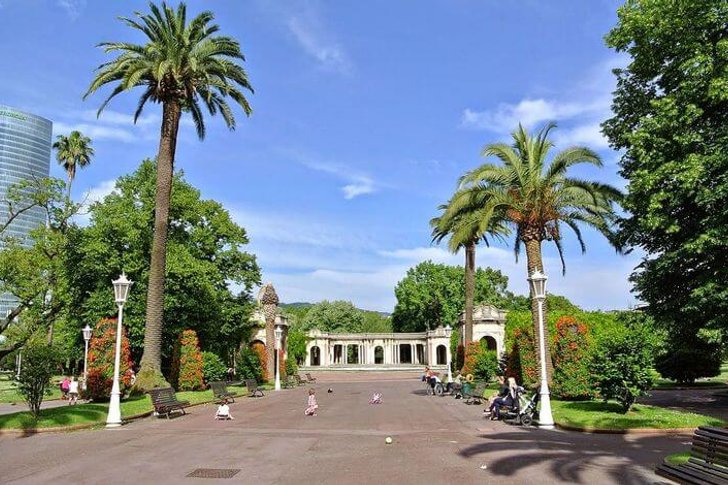Bilbao is world famous for its main attraction, the incredible Guggenheim Museum. Many guidebooks include this building in the list of must-see places in Spain. But the capital of the proud and independent Basque Country is not limited to a single museum, albeit a rather outstanding one. There are magnificent cathedrals, charming European streets, and picturesque neighborhoods with cozy squares.
The mysterious Basques still do not recognize themselves as Spaniards, believing that they live in a separate state. This self-awareness and identity seems to be in the air of Bilbao, forcing one to sympathize with the central authorities sitting in Madrid. What is the fact that the Basque language is not similar to any European language and belongs to a completely different group.
What to see and where to go in Bilbao?
The most interesting and beautiful places for walking. Photos and a short description.
- Guggenheim Museum
- Plaza Nueva
- Biscay bridge
- Campo Volantin Bridge
- Funicular Artxanda
- Basilica de Begogna
- Cathedral of Saint James
- Church of St. Nicholas
- Art Museum
- Basque Museum
- Maritime Museum
- Arriaga Theater
- Allondiga
- Euskalduna Palace
- Palace of the Provincial Council of Biscay
- City Hall of Bilbao
- Station Concordia
- Ribera market
- San Mames Stadium
- Doña Casilda Iturrizar Park
Guggenheim Museum
The Museum of Modern Art, which has long become a symbol of Bilbao. The collection is housed in a grand deconstructivist building built in 1997 by architect F. Gehry. Located on the waterfront, it embodies the idea of a futuristic ship. The permanent exhibition of the museum is dedicated to the 20th century, most of the exhibits are installations, abstractions and avant-garde works.
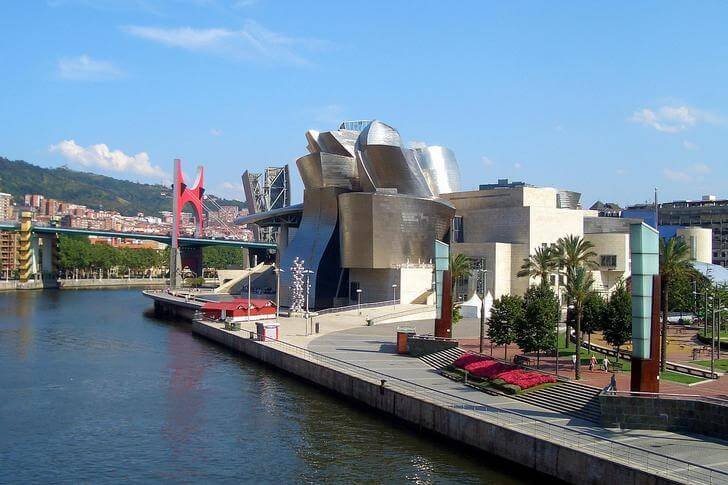
Plaza Nueva
Places like Plaza Nueva, perhaps, are in every Spanish city - the capital of an autonomous region. The area is like an enclosed courtyard. An arched gallery runs along the perimeter, under the arches of which there are tables of cafes and tapas bars. On Sundays, a flea market unfolds here, where you can buy antique books, coins, stamps, posters, and even birds in wooden cages.
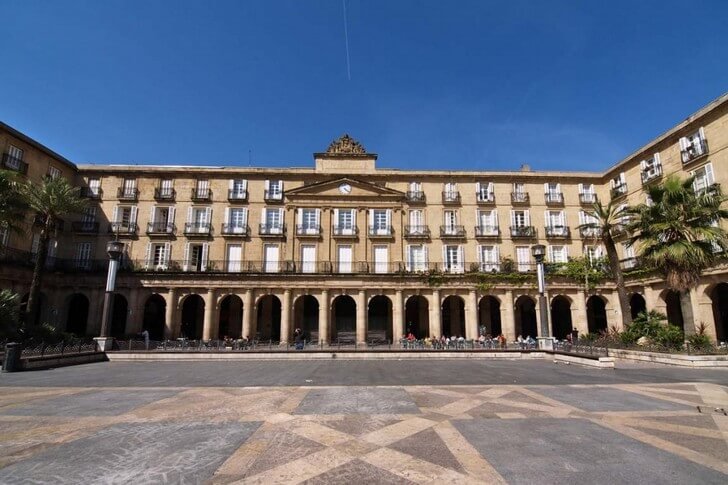
biscay bridge
An unusual transporter bridge that transports passengers from one side of the river to the other using a suspended gondola. The construction was erected in 1893 according to the project of a student of the famous engineer G. Eiffel. With the help of a special elevator, passengers can go up to the platform and look at the surroundings. It is also possible to cross it on foot, but this pleasure will cost much more.

Campo Volantin Bridge
An arched suspension bridge that is for pedestrians only. It was built in 1997 by the famous architect S. Calatrava. The main platform of the structure is supported by steel cables. This place is a symbol of modern Bilbao and is therefore very popular with tourists. At the same time, people recognize its impracticality - it becomes dangerous to walk on it when it rains.
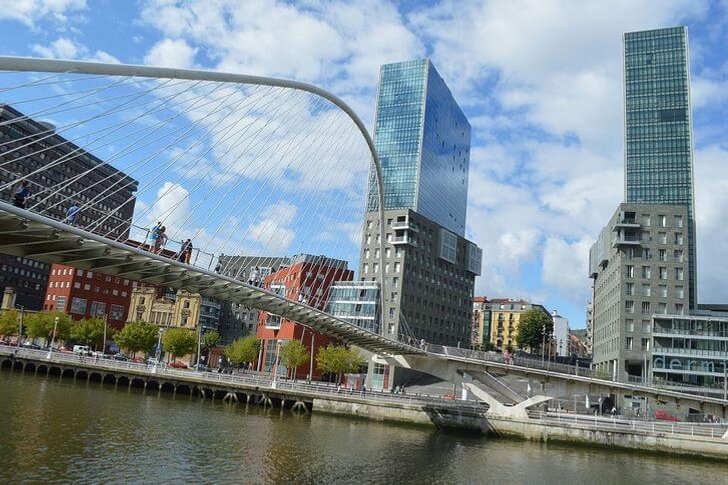
Funicular Artxanda
The funicular takes tourists to the top of Mount Artksanda, where a sports complex, a hotel, a park and several restaurants are located. During the trip, passengers can look at the panorama of Bilbao. The first funicular was built on this site in 1915. After the end of the civil war, it reopened in 1938. The mechanism was launched for the third time in 1983 after its modernization.
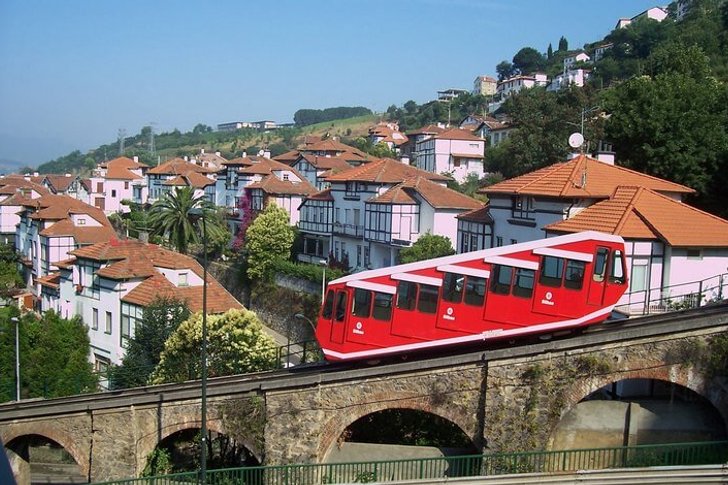
Basilica de Begogna
The inhabitants of Biscay consider the Holy Virgin Mary Begonya the patroness of all sailors. A basilica in her honor was erected in Bilbao in the 17th century. The exterior of the building combines Gothic and Baroque features, the interior decoration can be called elegant and luxurious. Particular attention is drawn to the gilded baroque altar and the wooden statue of the Virgin Mary installed in the middle.
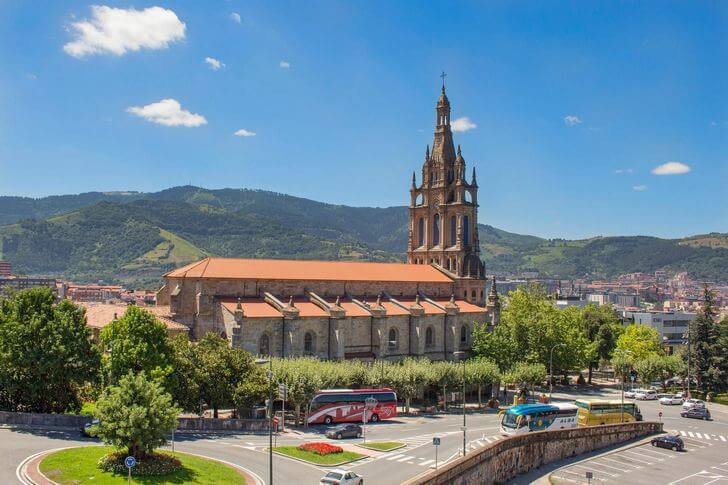
Cathedral of Saint James
The Gothic cathedral, which was built in 1300 before the foundation of the city itself, at a time when there was a small village of fishermen. It was built on the route of pilgrims following one of the roads of the Way of St. James. After 1374, the building was constantly rebuilt, so it gradually acquired the features of several architectural styles. The temple received the status of a cathedral only in 1950.

Church of St. Nicholas
Temple in honor of St. Nicholas the Wonderworker, built in the 16th century. Due to the fact that the church stands close enough to the river, its foundation and walls were gradually destroyed due to flooding. In 1756, a new baroque church was erected, prudently setting it on a solid stone plinth. Inside the temple, a skillfully executed altar and sculptures by the sculptor J.P. de Mena have been preserved.
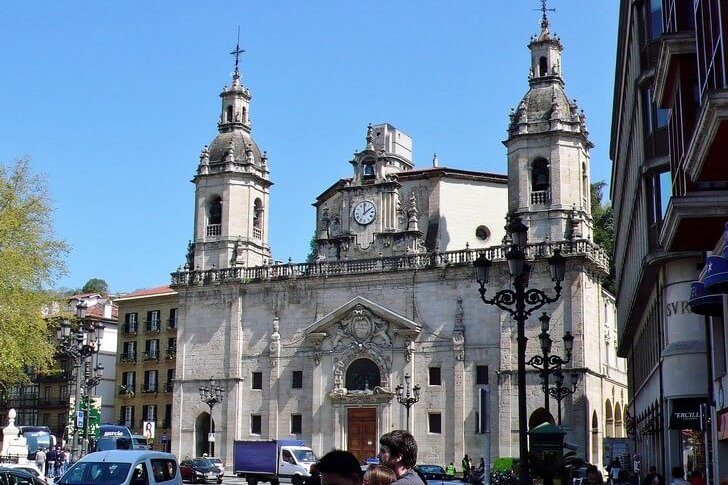
Art Museum
Unlike the famous Guggenheim, the collection of the Museum of Fine Arts is more traditional - it includes almost the entire artistic heritage of Spain from medieval sculptures to modern pop art. Works by F. Goya, B. Murillo, El Greco, J. de Ribeira, as well as many paintings by Basque painters are exhibited here. The museum constantly organizes temporary exhibitions, where collections from other countries are brought.

Basque Museum
The museum was established in 1921 with the aim of preserving the Basque culture. The first exhibits appeared here thanks to gifts from individuals who donated antique furniture, clothes, family coats of arms, books and other artifacts to the museum. Today the collection has thousands of copies. In the museum you can get better acquainted with the culture of the Basques, the origins of the traditions of the region, the history of the language.

Maritime Museum
Modern exposition, located in the docks of the old Euskalduna shipyard (part of it is open-air). The museum has several thematic sections dedicated to the geography of the Bay of Biscay, flora and fauna, maritime trade and shipbuilding. Visitors will see models of ships, maps of the ocean depths, learn how to knit sea knots and try themselves as a captain of a ship.

Arriaga Theater
The city theater, which was built several times and destroyed by fires or floods. The neo-baroque building, built in the 20th century, has survived to this day. Both dramatic and musical performances are staged on the stage, and bright dance shows are also held here. The theater constantly receives troupes of touring artists, they come here to perform from different countries.
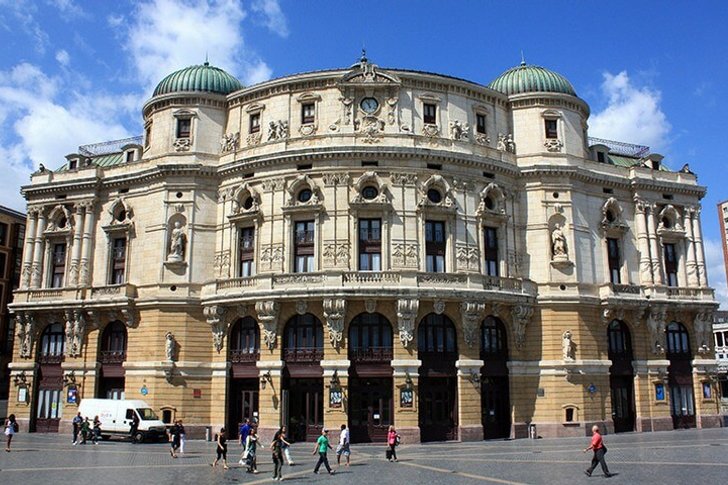
Allondiga
An entertainment complex created with the participation of industrial designer F. Stark. There are restaurants, clubs, concert venues and galleries. There is even a library and a swimming pool with a transparent floor on the top floor. Once the building housed a "strategic reserve" of wine from the Basque country, today it has become a mecca of entertainment for residents and tourists.
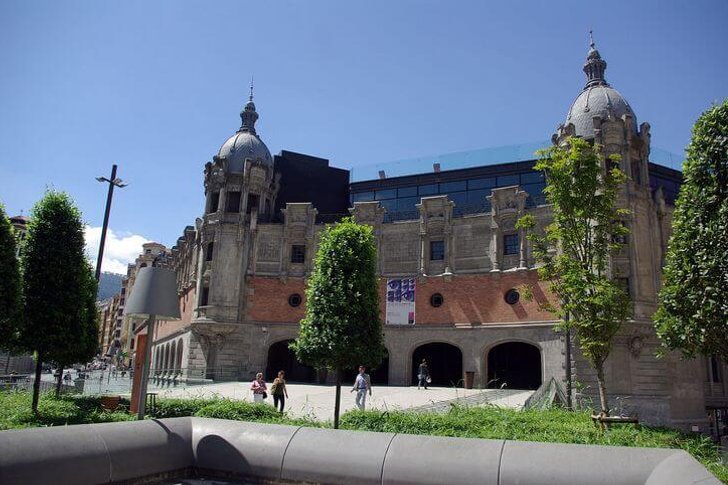
Euskalduna Palace
The Bilbao Symphony Orchestra performs in the building. Before a separate concert hall was built, the musicians played on the stage of the Arriaga Theatre. Euskalduna Palace is a modern building shaped like a ship. In addition to the performance area and the auditorium, there is a gallery inside with shops and restaurants. One place has even been awarded a Michelin star.

Palace of the Provincial Council of Biscay
The building where the government of Biscay sits. It was erected at the beginning of the 20th century. The architectural style can be attributed to neo-baroque, as the walls and facade of the building are decorated with rich decor, but at the same time, they do not look too pretentious. You can go inside with a tour group. In some months, this can only be done in the morning.
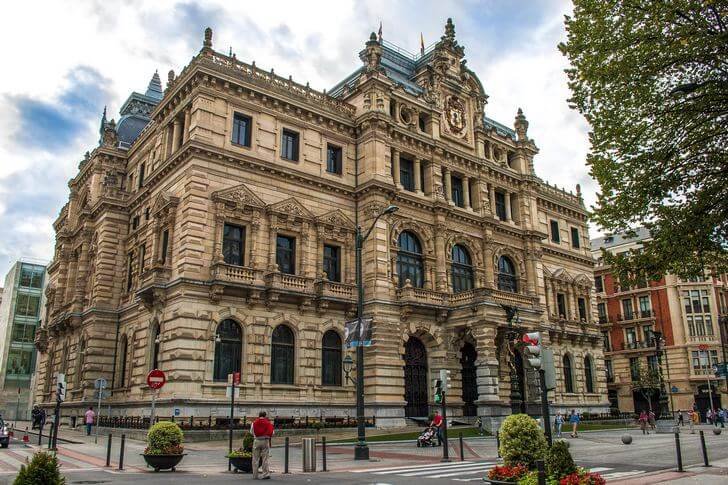
City Hall of Bilbao
The city hall building was erected in 1892 according to the project of E. Ernesto. And although at that time the minds of architects firmly captured the neoclassical style and modernism, this master remained faithful to the good old baroque. The city hall turned out to be surprisingly similar to the elegant palaces of aristocrats of the 17th-18th centuries with its arched windows, the central turret and the picturesque balconies of the central facade.
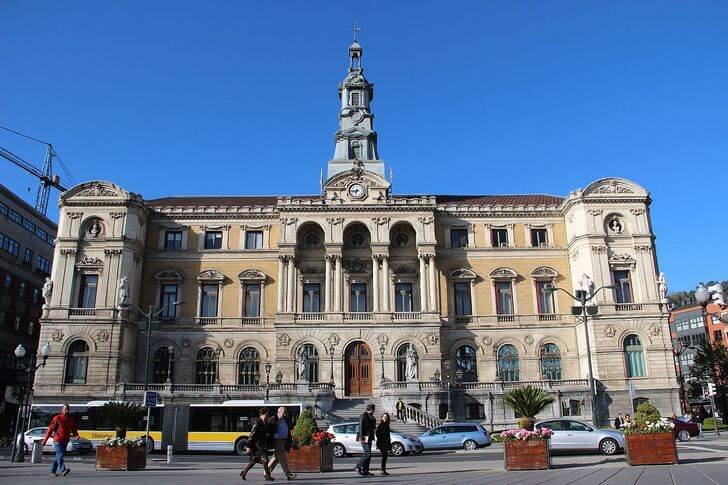
Station Concordia
The station is located in the Ensanche area, which was built up mainly in the first half of the 19th century. The station building was erected in the Art Nouveau style in 1902 by engineer V. Gorben and architect S. Achucarro. It is an architectural masterpiece of the so-called Belle Epoque, the period of European history from the last decades of the 19th century until the outbreak of the First World War.
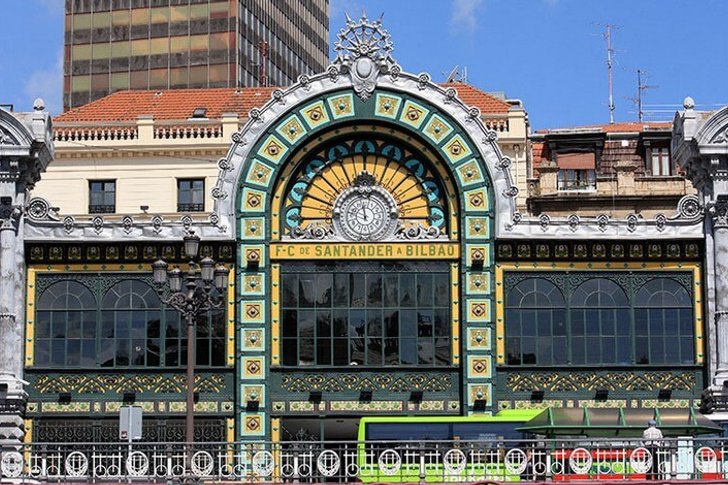
Ribera market
Ribera is considered one of the largest covered markets in Europe. Back in the 14th century, a street bazaar was located in its place. The malls are located in a building that stands at the very edge of the water and resembles a ship about to set sail. Here they sell vegetables, farm cheeses, seafood, fruits, flowers, spices and much more. Here you can not only come for groceries, but also have a delicious meal.
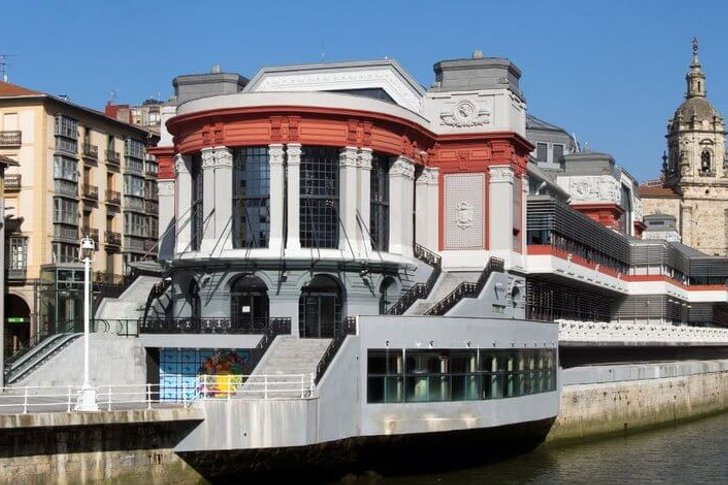
San Mames Stadium
The arena opened in 2013 on the site of an old stadium that has existed for 100 years and has been considered one of the best in Europe all this time. It is home to the Athletic Bilbao football club. So far, the stadium has not managed to fall in love with the audience as much as its predecessor, but glory will surely come as soon as the arena hosts some major international competitions.
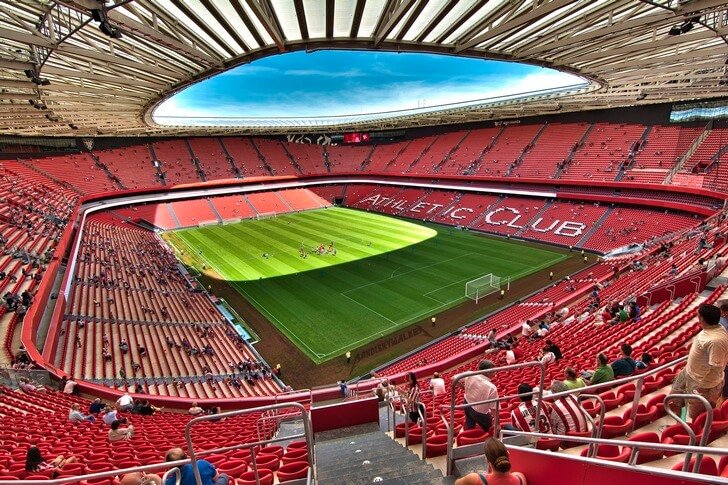
Doña Casilda Iturrizar Park
A vast green area located between the districts of Ensanche and Abandoibarra. The park covers an area of almost 50 thousand m². There is an extensive network of walking alleys, fountains, benches, and many elements of landscape design. The park is a great place for recreation for residents of nearby areas. Tourists also visit this place, as it is only a 5-minute walk from the Guggenheim Museum.
